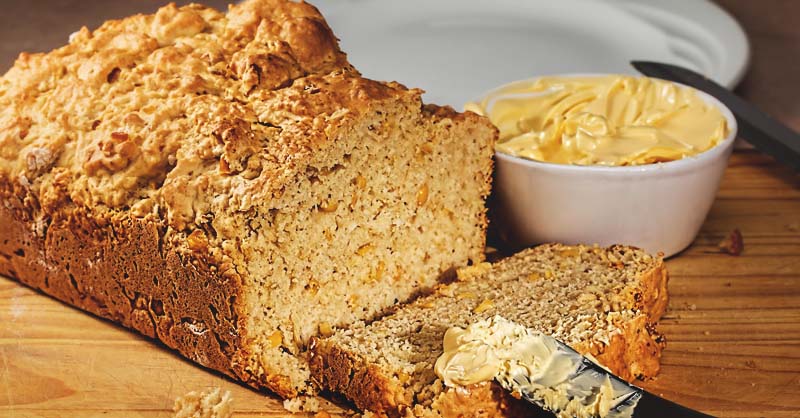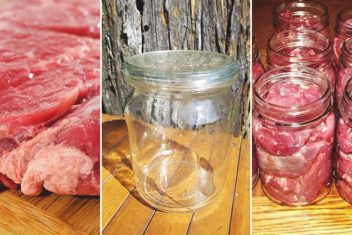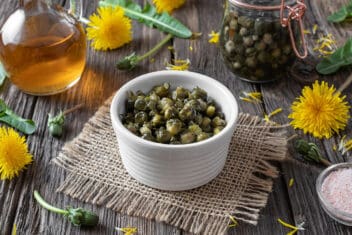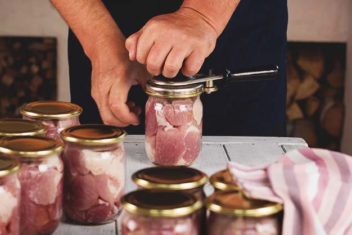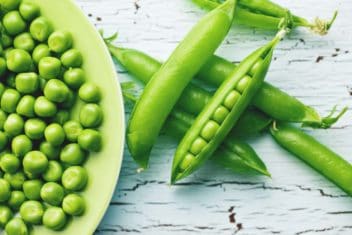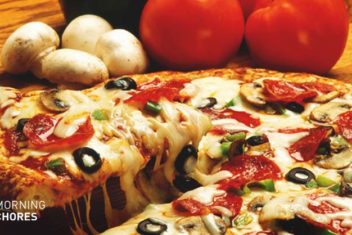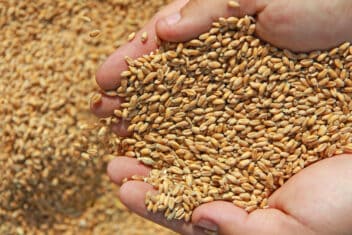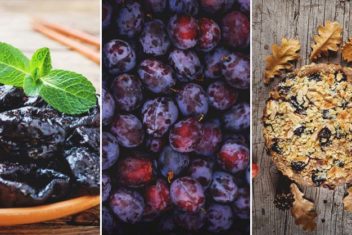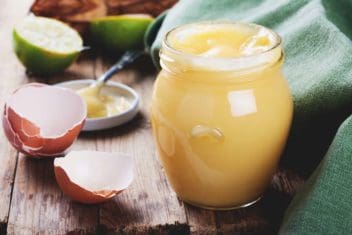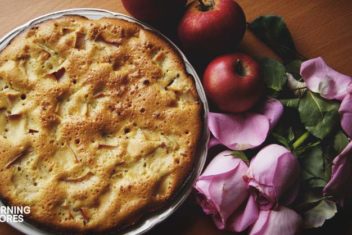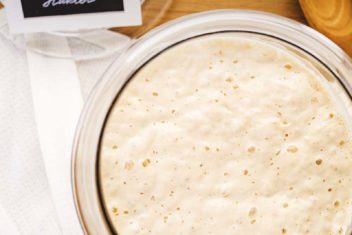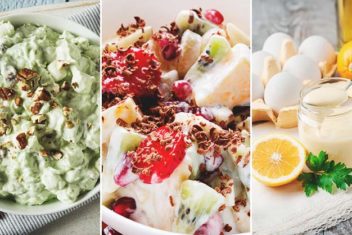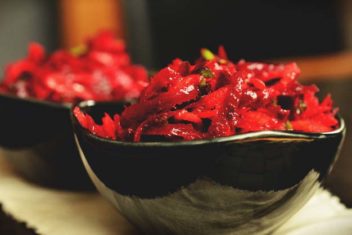Until I moved to the South, I didn’t really eat much corn bread. Occasionally, I’d have some as a side to chili. Or maybe someone would serve a corn muffin for novelty at dinner. But, it just wasn’t a thing in any of the places I have ever lived before.
Then, again, neither were potlucks. Now though just about every meeting or get-together I attend is a potluck. That means you have to find something to cook that travels well, will feed a large group, and doesn’t diminish in quality when eaten at room temperature.
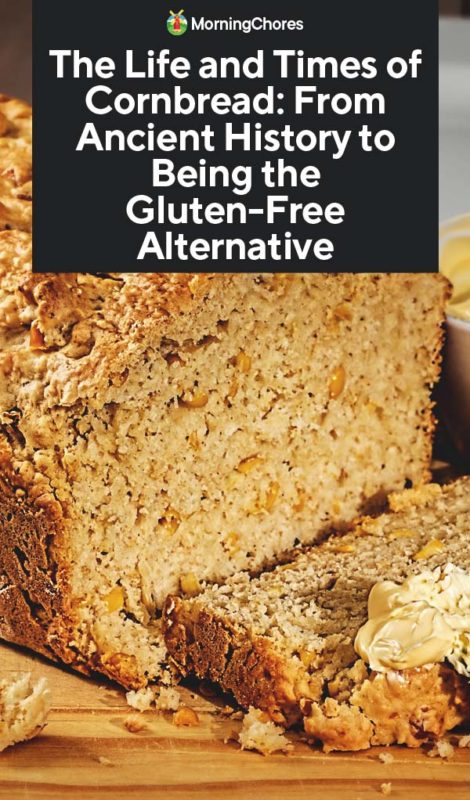
Cornbread: The Perfect Potluck Dish
As such, I now have new respect for cornbread. It’s about the easiest all-around crowd-pleaser you can make and take to a potluck.
Plus, I have discovered an astonishing array of styles, with more secret ingredients than I could have ever imagined. So, I have learned there are plenty of ways to make it so it doesn’t come out boring or dry.
In fact, just about everyone I know from the South has a generations-old recipe that has been handed down with the utmost care. To be honest, some of those recipes use ingredients I would never consider buying myself.
Things like margarine and grocery store canned creamed corn are often added to the mix.
Still, even those questionable recipes always come out tasting good and wholesome. In fact, cornbread has a kind of magical ability to suggest simpler times and make you feel at home.
Why Cornbread?
The fact that I now eat so much cornbread, made so many different ways, got me wondering how cornbread became so ubiquitous in the South.
Where did it come from? Why does everyone have a different recipe? Why don’t people ever seem to get tired of eating it?
Those questions led me to do some research and find out all the ins and outs of cornbread.
Turns out, there are a lot of really good reasons why cornbread has such a long legacy in the Southern States of the U.S. and even further south into many Latin American countries.
Native American Origins
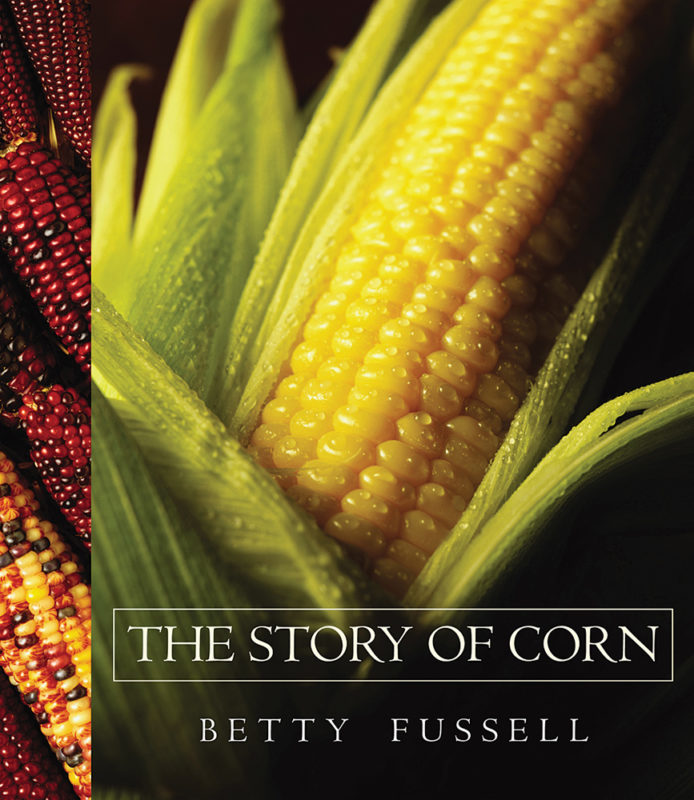
Corn bread as we know it today is a legacy of the Native Americans. It’s been cultivated for over 7000 years. The earliest evidence of it’s long history has been found in Mexico.
Early Native Americans eventually shared the skills, seeds, and knowledge to grow corn with the Europeans who arrived much later. As such, the Southern obsession with cornbread owes its rich history to the Native American people.
Staple of Simplicity
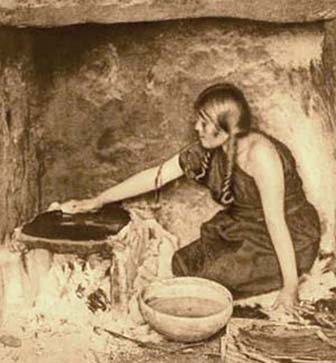
Native Americans relied so heavily on corn meal as a staple of their diet that they found endless ways to prepare it keep it interesting. They evolved the process of using slaked lime to loosen the corn from the husks and make the grain more digestible.
Tortillas, in fact, are about the most basic cornbread you can make. They are unleavened, in other words “flat” but they are still a form of cornbread.
Once the Native Americans taught the settlers how to grow corn, the next natural step was for the settlers to make cornbread too.
Most early versions of cornbread were simple water-based preparations meant to be eaten with soups and stews.
Additional Ingredients
All those extra ingredients we now consider common, like sugar, lard or butter, and milk, came much later. For example, dairy cattle came over from Europe. As that livestock was bred and spread, the availability of dairy became common.
Things like buttermilk, or just plain old sour milk, in lieu of water evolved the ancient cornbread style into the moister versions we use today.
Early iterations of baking soda, called saleratus, also got mixed into recipes. Between this and the soured milk, cornbread started to be something you not just ate to live, but enjoyed eating.
Anyone Could Make Cornbread
The other attraction to cornbread was how downright simple it was to make. You didn’t have to knead the dough endlessly or cultivate specific yeast.
You didn’t need a baking oven. You could even make cornbread using the flat side of your hoe, as Southern slaves were purported to do. Some say this is why cornmeal-based pancakes are called “hoe cakes”.
Please don’t try that at home, though. Most historians now believe “hoe” was another word for a griddle. So hoecakes were likely made in a pan, just like they are now.
Trying to do it with a very narrow, and oddly angled, garden implement could prove tricky!
In any event, the point is — cornbread was relatively easy to make. Plus corn was easy to grow, particularly in hot climates. So, that made it a natural food staple for less industrialized cultures.
What About the Wheat?
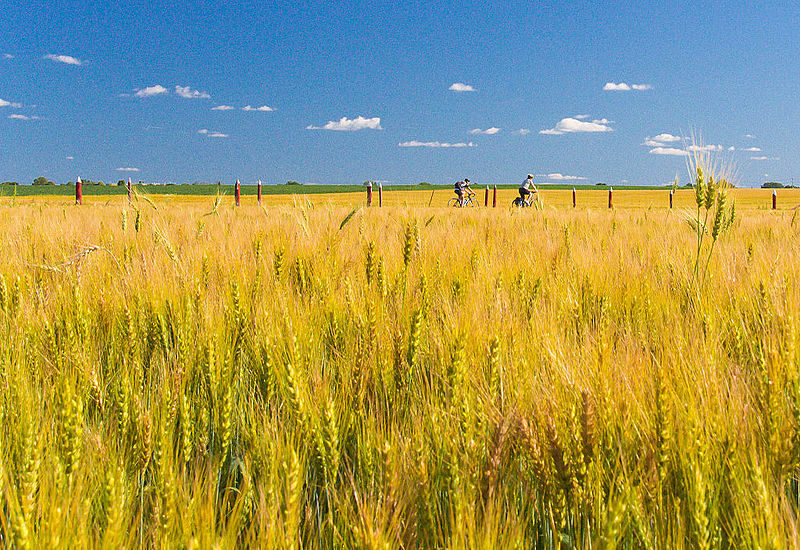
Modern recipes often cut the cornmeal with wheat flour to improve the texture. That was true in some early recipes too. Cornbread made only with cornmeal, not wheat flour, was referred to in colonial times as “the sad paste of despair.”
Unfortunately, wheat was notoriously hard to grow in the South. The humidity and heat made it as likely to rot on the stem as to be harvestable. (This would still be true, but for aid of fungicides and fertilizers.)
During the civil war, with no access to wheat, Southerners fell back on pure corn meal based cornbread for both self-sufficiency and as a point of pride.
Civil war soldier rations were meager, often inedible, and basically considered insulting to many soldiers.
So, instead they would make “cornfed cake” or cornbread and eggs, often taken from nearby farms. That provided the basis of their nutrition for the better part of the war.
After that Civil War resurgence, cornbread remained a staple in the South.
Though, in good times, it is still usually enhanced with the use of wheat flour, eggs, oil, butter, cream, yogurt, buttermilk, and a host of other ingredients to give it enduring appeal in times of food abundance.
The New Resurgence in Cornbread
Our modern lives of excessive access to wheat has driven quite a large percentage of people to become gluten-sensitive. In a surprising historical twist, a food long associated with poverty and hardship, is now making a come back among people with the financial resources to be extremely conscientious about what they eat.
Since corn is the most abundant, naturally gluten-free food on the planet, it makes sense for people to consider it as a wheat alternative. Keep in mind though, even though corn itself is gluten-free, it is often handled in locations where wheat is also present.
Therefore, unless your corn is specifically labeled “gluten-free” there is a small chance that it has been cross-contaminated with gluten from other products. Some cornmeal products also contain additives like wheat flour to improve their texture.
Additionally, if you are concerned about GMOs in your diet, corn cross-pollination is almost impossible to prevent without about a mile of separation between a GMO and non-GMO field. That means even non-GMO seeds and fields may contain some GMO genetic history.
Looking for cornmeal products labeled non-GMO isn’t a guarantee that those packages don’t contain GMO pollinated seeds. However, it is an ethical promise that the manufacturer has taken extra steps to limit GMO cross-contamination.
Historical Cornbread Recipes
If you really want to cultivate your appreciation and historical understanding of the importance of cornbread, try using the historically-based recipes below.
If you want to have an authentic experience, then try doing it with corn you mill or even raise yourself! Oh, and make sure to serve these up with something saucy or brothy. Stew, chili, soup, or a classic pot of beans are perfect choices!
1. Native American Cornbread
This Iroquois cornbread “recipe” is more an explanation of a technique. As you can imagine, Native Americans didn’t have cupboards full of cookware like we modern home cooks do.
They didn’t need a measuring cup to tell them how much water and cornmeal to add. They just make educated guesses as to quantities.
Personally, I use very few recipes. So, I love this simple explanation. Also, it’s different from our modern versions that involve boiling the cornbread.
Alternatively, you can fry it using sunflower oil as the fat source for a more authentic flavor profile.
2. Civil War Style Cornbread
This Civil War style cornbread recipe gives you the recipe as it would have been made at the time using ingredients like saleratus (pre-cursor to baking soda). But, it also offers you an updated ingredient list using things you can find at your grocery store now.
You’ll most definitely want to eat this with a pot of beans. I find it particularly tasty with black-eyed peas, which are another Southern favorite. Black-eyed peas also grow extremely well in hot, humid, Southern climates.
3. Cornbread 1935-style
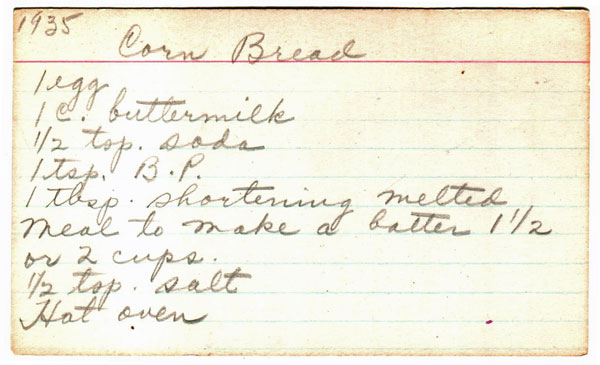
This “old-fashioned” recipe (which is actually quite modern on a 7000 year time scale) came from a family recipe box and dates back to 1935. It includes the use of shortening, which has fallen out of favor of late. But, it’s fun to try for the historical perspective.
When you do, you’ll see why shortening was such an innovative tool in the kitchen at the time. Using it really improves the texture over earlier recipe iterations.
4. Gluten-Free Corn Bread
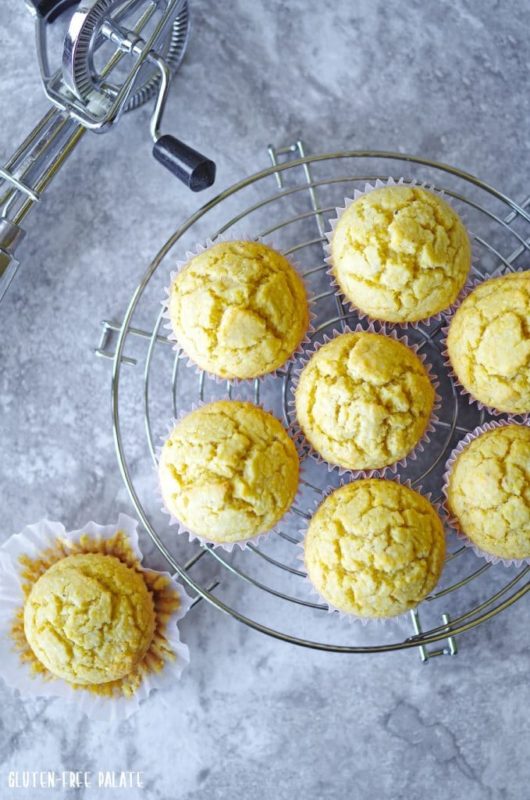
This recipe is gluten-free and dairy-free. Though it does include eggs and sugar, it has some of those classic modern touches that make it more palatable to us newly converted
The small muffin size also makes it more attractive for those concerned with portion control. Me, though, I am all about the cast-iron pan sized corn bread, which is why our last recipe is the Southern Classic!
5. Southern-style Cast Iron Cornbread
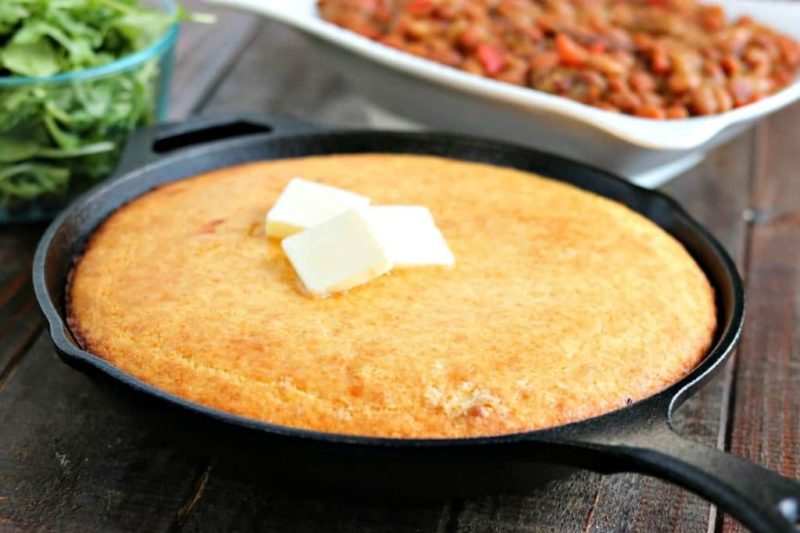
I have learned the key to cast-iron cooked cornbread is to heat the pan first and coat it with lots of butter or bacon lard. If you happen to have cracklins, make sure to add them to your batter too!
This recipe is about as basic as Southern style cornbread gets. So, you can add whatever other ingredients you want. Dried nuts, baked beans, chunks of homestead cheese. Consider the batter a base for all the other good stuff you produce on your homestead.
Cornbread From Ancient Origins To Modern Homesteading Benefits
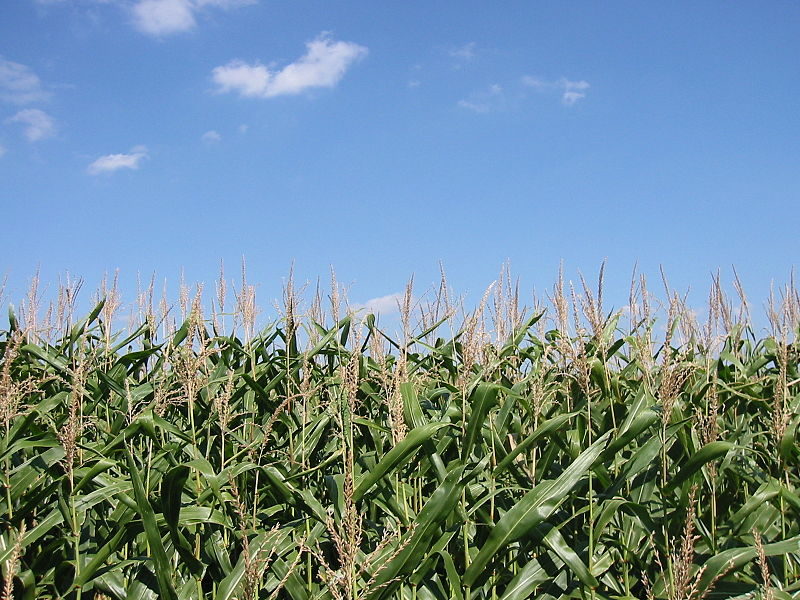
I have to tell you, even though I have come to enjoy eating cornbread, it didn’t make my favorite list until I started digging into its history.
Now, that I understand how it came to be not only a Southern
This simple fare has survived the test of time, crossed cultures, and progressed from being a poor person’s survival mechanism to being a rich person’s health food. Thanks to the convenience of being able to buy bagged cornmeal, it’s even easier to make today than it was historically.
Honestly though, I love it for the same reasons the early Native and European Americans did. I can easily raise heirloom corn on my homestead.
I can also dry it and convert it to meal using simple tools, plus patience and time. It’s high in calories, nutrition, and belly-filling. For me, cornbread is not only great for potlucks, it’s perfect for homesteaders too!

